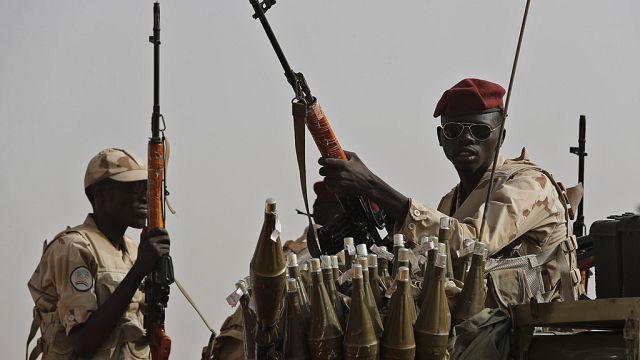In the heart of North Darfur, a once bustling haven for over 300,000 displaced civilians seeking refuge from violence has undergone a sinister transformation. The Zamzam displacement camp, renowned for its role in providing shelter and aid to those fleeing conflict, now stands as a chilling symbol of militarization. The paramilitary Rapid Support Forces (RSF) have seized control, reshaping the camp into a military barracks, shattering the fragile peace that once existed within its confines.
Eyewitnesses and humanitarian organizations paint a bleak picture of the scene at Zamzam. What was once a place of temporary respite, marked by rows of tents offering scant protection, has given way to a landscape dominated by RSF fighters. These armed personnel, with their ominous presence, have replaced tents with fortified structures and established checkpoints that monitor and restrict movements within the camp. The very essence of the camp, once a beacon of hope, has been tainted by the specter of military control.
The repercussions of this takeover are dire, exacerbating an already precarious situation. Zamzam, plagued by severe food shortages even before the RSF’s arrival, now faces a deepening humanitarian crisis. Reports indicate that access to aid workers has been severely curtailed, leaving the vulnerable population at the mercy of conflicting forces. With famine looming large over the region, the militarization of Zamzam has pushed its inhabitants to the brink, trapped in a cycle of despair with little hope for reprieve.
International outcry has followed swiftly in the wake of these developments. Watchdogs and human rights organizations have decried the repurposing of a humanitarian zone for military purposes, citing violations of international law and the potential for grave war crimes. The United Nations and various humanitarian agencies have issued fervent appeals for unrestricted access to the area and the safeguarding of essential civilian infrastructure. The stark reality of Zamzam serves as a stark reminder of the human toll exacted by the protracted conflict between the RSF and the Sudanese Armed Forces.
This harrowing saga unfolding within the confines of Zamzam is but a microcosm of a broader crisis that has engulfed Sudan. With over 12 million people displaced and untold suffering rampant across the nation, the plight of Zamzam serves as a poignant reflection of a nation torn asunder by internal strife. The ramifications of this militarization extend far beyond the confines of the camp, underscoring the urgent need for a concerted international response to stem the tide of human tragedy unfolding in Sudan.
As the world bears witness to the tragic fate befalling Zamzam, it is incumbent upon global leaders and humanitarian agencies to act decisively. The fate of hundreds of thousands of displaced individuals hangs in the balance, their lives caught in the crossfire of a conflict that shows no signs of abating. The question that looms large is whether Zamzam will serve as a rallying cry for collective action or fade into obscurity as yet another tragic footnote in the annals of human suffering. Only time will tell if the world heeds the silent cries of Zamzam and takes meaningful steps towards alleviating the anguish of those ensnared within its boundaries.

